- 24/7 EMERGENCY WATER DAMAGE SERVICE
Faced with water damage? Time is critical. This guide to water damage restore includes urgent steps to stop further damage and outlines what to do next. We’ll cover everything you need for effective restoration, from initial actions to long-term solutions.
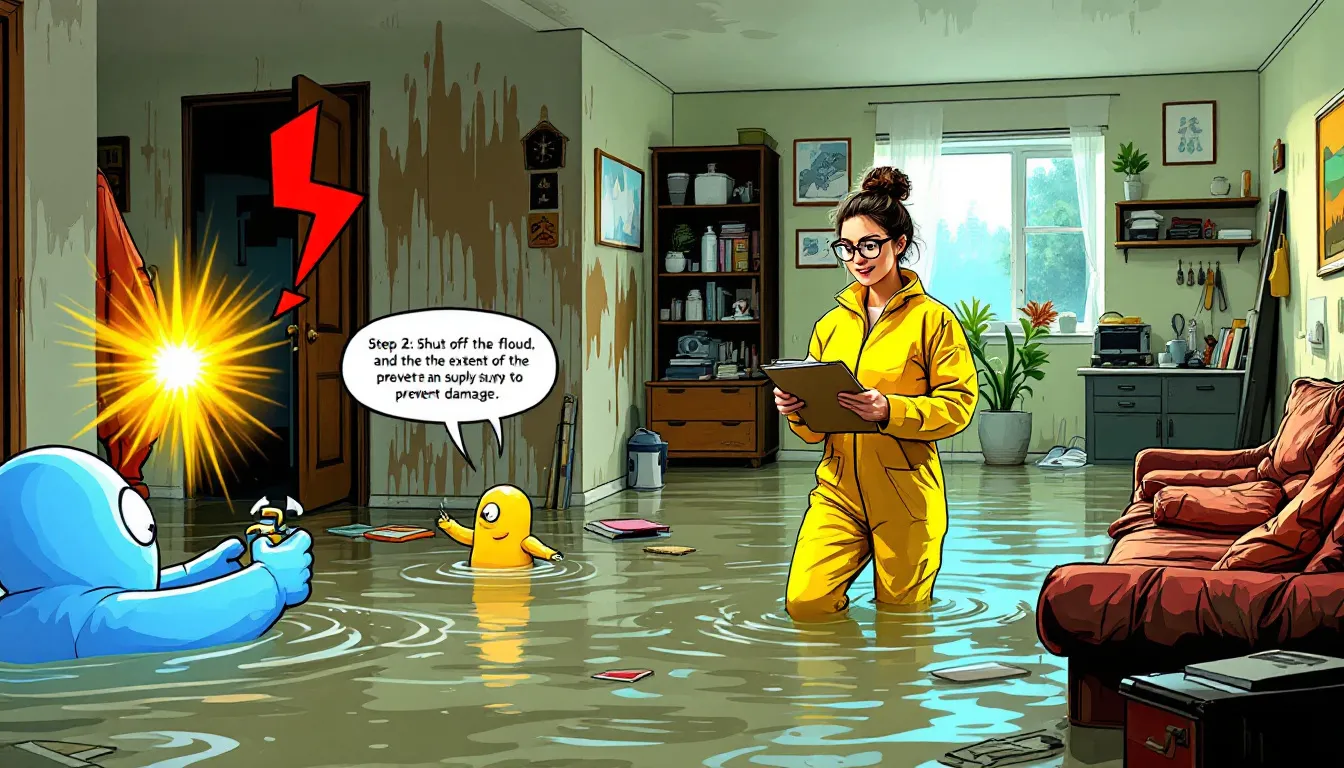
The first moments after discovering water damage are crucial. Safety should be your top priority. Immediately turn off the power to prevent any risk of electric shock. Once the area is safe, identify and fix the source of the water intrusion. It could be a burst pipe, a leaking roof, or flood water entering your home. Stopping the source is essential to prevent further damage.
Next, contact a professional restoration company as soon as possible. Time is of the essence. The longer water sits, the more damage it can cause, leading to mold growth and structural issues. Quick action can make a significant difference in the water damage restoration process. Water damage restoration experts can begin water removal and mitigation efforts immediately, minimizing long-term damage.
Lastly, while waiting for the professionals to arrive, try to remove any valuables from the affected area. If possible, start the water cleanup process by mopping up excess water and using towels to soak up as much as you can. Remember, every bit of water removed now is less water the professionals will have to deal with later, reducing the risk of further damage during the water damage cleanup.
Once the immediate crisis is under control, the next step is to assess the extent of the water damage. This starts with an initial inspection to identify visible signs of water damage, such as stains, discoloration, and mold growth. Safety measures, like turning off electricity and wearing protective gear, are crucial during this assessment to avoid any health hazards.
Conduct a detailed visual inspection to uncover hidden damage. Professionals use advanced tools like moisture meters and infrared cameras to detect moisture behind walls and ceilings that isn’t immediately visible. These tools help in determining the full extent of the damage, which is necessary for creating an effective restoration plan.
Document the findings as part of the water damage assessment. Photographs and moisture readings provide a clear picture of the damage, aiding in restoration planning and insurance claims. An accurate assessment can prevent further damage and help in the efficient execution of the water damage restoration process.
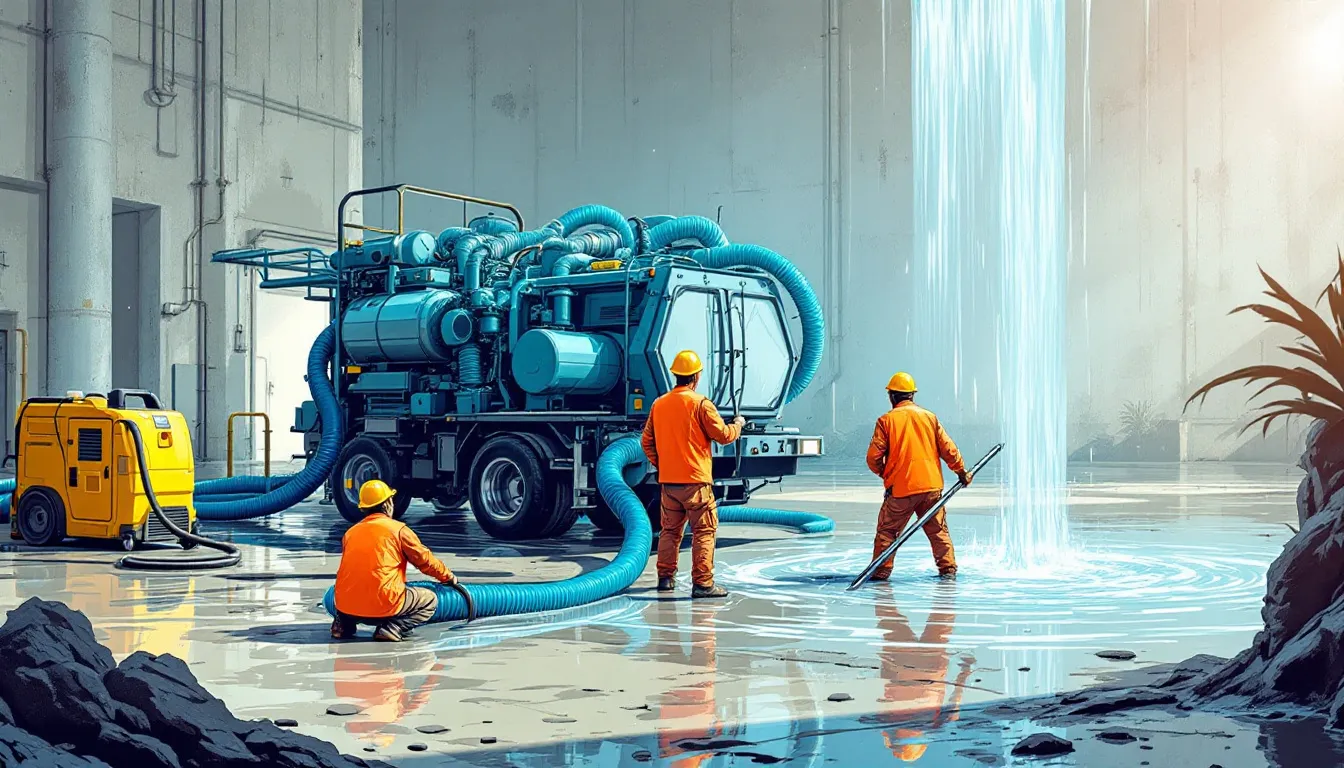
With the damage assessed, it’s time to remove the standing water. Various techniques are used by restoration experts to ensure efficient water extraction. Industrial vacuums and submersible pumps are commonly employed to remove large volumes of water quickly. In severe cases with high water levels, gas-powered pumps may be used for continuous water removal.
Truck-mounted vacuum systems are another effective method for water extraction. These powerful machines can remove water more efficiently than standard vacuums, speeding up the restoration process. The goal is to remove as much water as possible to prevent further damage and prepare the area for drying and dehumidification.
Advanced drying and cleanup equipment are utilized to ensure all excess water is removed. This not only includes water extraction but also the initial stages of drying out the affected areas to prevent mold growth and other secondary damages. Professional water removal techniques are critical to restoring your home efficiently and effectively.
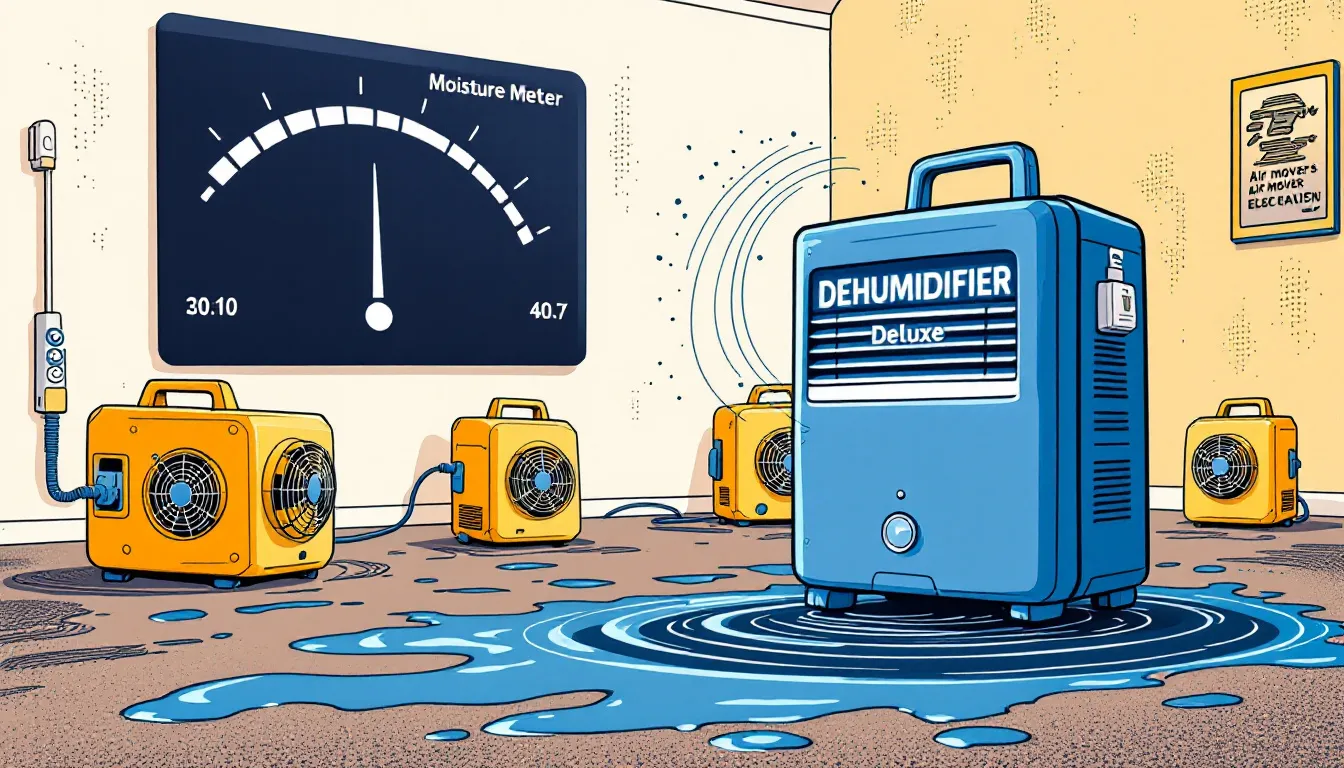
After the standing water has been removed, the drying process begins. Starting this process within the first 24 hours is vital to prevent mold growth, which can begin to develop within 72 hours if moisture isn’t addressed. Dehumidifiers play a crucial role in this stage by extracting moisture from the air, which helps prevent mold and mildew growth. The drying time is essential for ensuring effective results.
Dehumidifiers expedite the drying process and prevent secondary damage from prolonged moisture exposure. This not only helps in drying the affected areas but also improves the overall air quality in water-damaged spaces. Effective dehumidification is essential to avoid long-term damage and ensure a thorough restoration.
Additionally, air movers and other specialized equipment are used to circulate air and speed up the drying process. Rapid removal of water and moisture is necessary to avoid lasting damage to indoor environments. By addressing the affected areas promptly, you can significantly reduce the risk of mold growth and structural damage.
Once the area is dry, cleaning and sanitizing surfaces is the next step. Determine the water contamination category to identify the appropriate decontamination scope and type. This includes cleaning floors, carpets, furniture, and personal items that have been affected by the water damage, including any wet carpet.
Surfaces must be thoroughly cleaned and sanitized to eliminate any bacteria and prevent health risks. This process involves using specialized cleaning agents and equipment to ensure all contaminants are removed. For carpets and flooring, professional-grade cleaners are used to restore them to their original state.
Personal items, furniture, and other materials should also be cleaned and sanitized to prevent mold growth and other issues. Proper cleaning and sanitization are essential steps in the water damage restoration process to ensure a safe and healthy environment for you and your family, including mold cleanup.
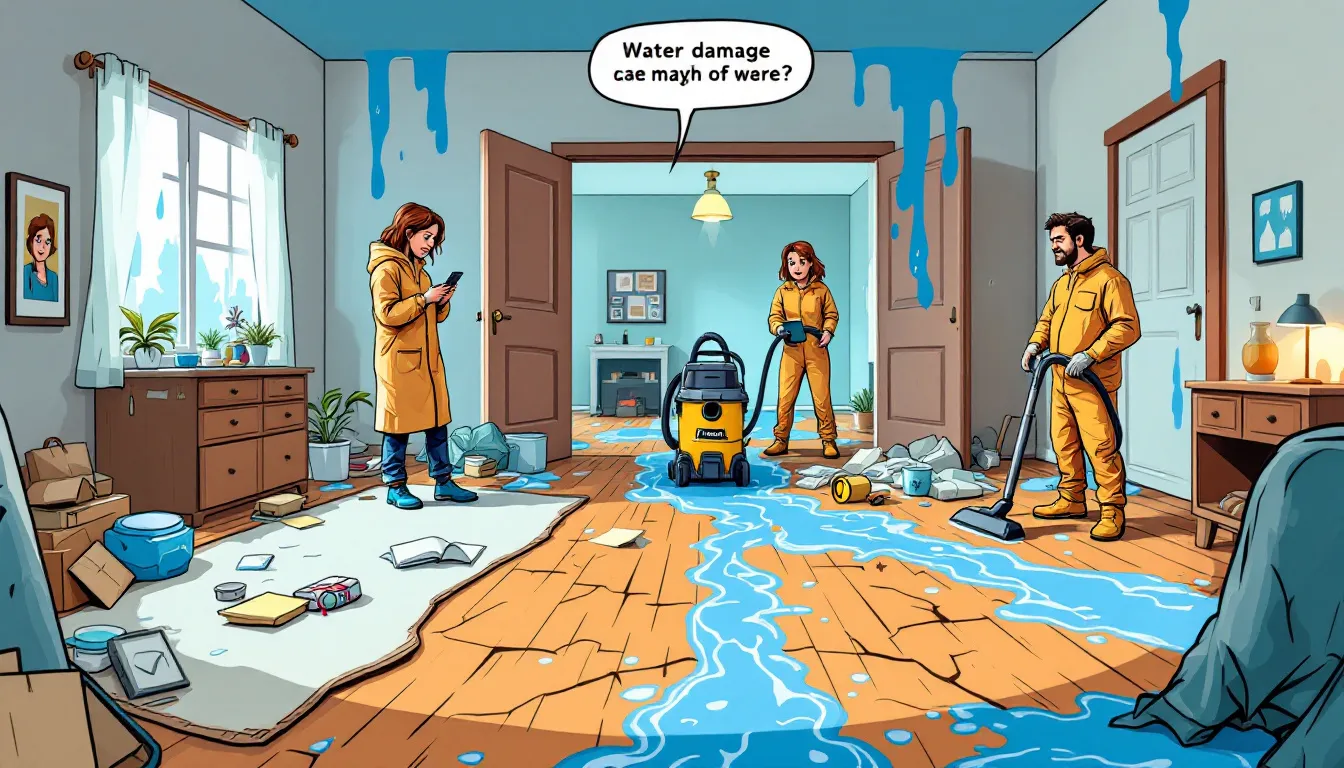
After cleaning and sanitizing, the focus shifts to clean repair and reconstructing the damaged area to lead the way in effective restoration and major damage control.
Reconstruction may be required if the water damage or flood damage resulted from a natural disaster. This situation calls for careful assessment and water mitigation planning.
Items that often need to be replaced include:
The removal of damaged materials can take from a few hours to several days, depending on the extent of the damage. The restoration process can be simplified by having both damage mitigation and rebuilding handled by one qualified company. This ensures a seamless transition from cleanup to reconstruction.
Getting estimates from multiple contractors can help ensure fair settlement amounts for repairs. This step is crucial in the water damage restoration process, as it ensures all damaged areas are properly repaired and restored to their original condition, minimizing the overall cost.
The time it takes to complete the water damage restoration process varies significantly depending on several factors. Minor water damage restoration typically takes several days to a week, while severe cases may take several weeks to a few months. Extensive water damage can sometimes take many months to fully restore.
Factors that influence the duration of the restoration process include the extent of the damage and the specifics of the property. The amount of materials being replaced, the need for shipping materials, and the required labor can all affect how long full restoration takes. Understanding these factors can help set realistic expectations for the restoration timeline.
Working with a professional restoration company with years of experience can help streamline the process and ensure efficient and effective restoration. Their expertise can make a significant difference in the overall restoration time.
Navigating the insurance claim process can be daunting, but it is a crucial part of the water damage restoration process. Documenting the damage with pictures can support insurance claims effectively. It’s essential to read your policy terms carefully when considering filing a claim to understand what is covered.
When an insurance claim is filed, the insurance company is usually CC’d on the invoice sent by the restoration company. Independent insurance agents can provide better advocacy for homeowners compared to direct writer agents. Their expertise can help in dealing with the claims process and ensuring you receive fair compensation.
Sorting through personal property quickly helps to separate salvageable items from those that need to be discarded. This step is crucial in presenting a clear and organized claim to the insurance company, leading to a smoother and faster settlement process.
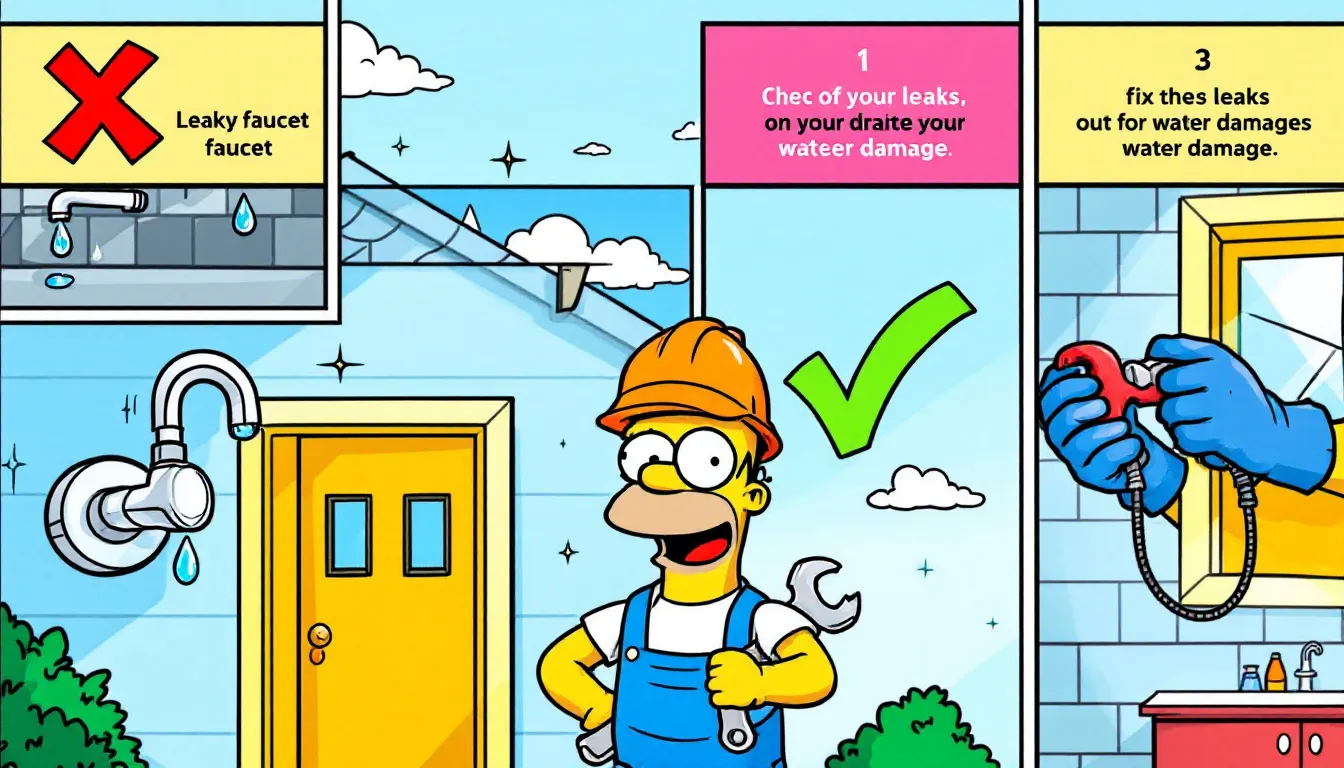
Take proactive measures to greatly lower the likelihood of water damage. It’s essential to take these steps to protect your property. Regular maintenance of water supply lines and valves helps avoid leaks. Installing smart water sensors near appliances can quickly alert homeowners to leaks. Some systems can even automatically shut off the water supply to prevent extensive damage.
Water sensors can notify designated contacts if the homeowner is away, allowing for timely intervention. It’s advisable to place water sensors in high-risk areas like kitchens and laundry rooms. Implementing these measures enhances a homeowner’s ability to respond to potential issues before they escalate.
These precautionary measures provide peace of mind and better prepare you to handle potential water emergency situations.
In summary, effective water damage restoration involves a series of critical steps, from immediate actions and thorough assessments to professional cleanup and long-term preventive measures. By following these guidelines, you can minimize the impact of water damage and ensure your home is restored efficiently and safely.
Remember, proactive measures and quick responses are key to preventing and mitigating water damage. Equip yourself with the knowledge and tools to handle water emergencies, and you’ll be better prepared to protect your home and loved ones.
The first step upon discovering water damage is to immediately turn off the power to prevent electric shock. Following that, identify and fix the source of the water intrusion and contact a professional restoration company for a swift response.
Professionals assess water damage through thorough visual inspections and utilize advanced tools such as moisture meters and infrared cameras to identify hidden moisture. This comprehensive approach allows them to document findings and develop an effective restoration plan.
Emergency water removal techniques involve using industrial vacuums, submersible pumps, gas-powered pumps, and truck-mounted vacuum systems. These methods ensure efficient and effective water extraction in critical situations.
To prevent future water damage in your home, regularly maintain water supply lines and install smart water sensors in high-risk areas such as kitchens and laundry rooms. This proactive approach will help significantly reduce your risk.
To effectively work with insurance companies for water damage claims, document the damage thoroughly with photos and familiarize yourself with your policy terms. Engaging independent insurance agents can also enhance your advocacy in the claims process.
About us
Since 1998, Premier Emergency Water Removal has been helping property owners In The Greater Seattle Area recover from flood damage and water emergencies.
Contact Us
Copyright © 2025 Premier Emergency Water Removal. All Rights Reserved.